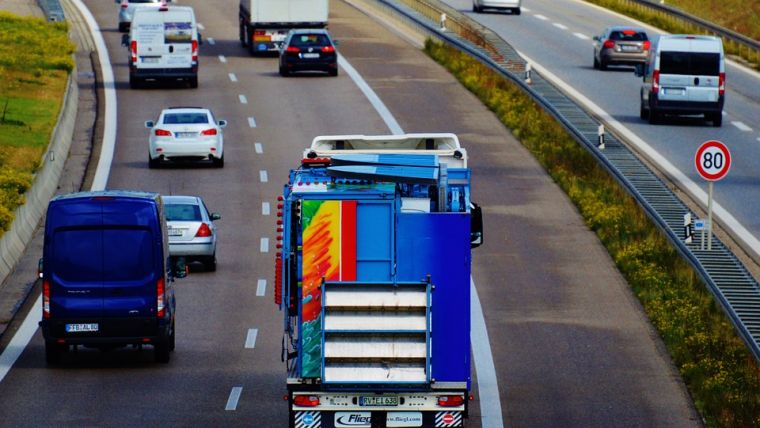Deutsche Telekom, Fraunhofer ESK, Hexagon and Nokia Test Automated Driving Technology
During a series of tests on the A9 motorway digital test track in Germany, Deutsche Telekom, Fraunhofer ESK, Hexagon and Nokia have reached a milestone on the path to safe automated driving. The companies achieved centimetre-level positioning accuracy for vehicles, demonstrating the effectiveness of their combined technologies.
The mass-market technology currently available provides a positioning accuracy in the range of metres. Bringing this down to centimetre range in a way that qualifies for mass-market use is an important prerequisite for future autonomous driving. Key to improving the level of accuracy was the successful integration of various technologies in this live testing environment.
Connecting on the go
The digital test track on the A9 is covered by eight eNodeB base stations of Deutsche Telekom’s LTE live network. The test cars travelling on the A9 connected to the network and received the correction data via the radio cell covering their exact position.
According to Alex Choi, SVP research and technology innovation at Deutsche Telekom, mobile connectivity is the basis for reception of correction data, which is the prerequisite for precise positioning. Deutsche Telekom’s fast and almost nationwide network enables the data transfer in real time, and the firm is a committed partner in cross-industry activities to develop connectivity-based solutions to enable safer and more efficient mobility, he explained.
Regionalisation outperforms individual nodes
Multi-access edge computing (MEC) technology by Nokia is a key component to enable precise positioning for the mass market. Instead of providing individualised correction data for every single vehicle, MEC allows the dissemination of regionalised correction data to all vehicles in a specific area at the same time. This reduces network traffic and is more cost efficient. The MEC resources are located in close proximity to Deutsche Telekom’s cell towers along the A9. They provide the platform and computing power for the application by Hexagon, which requests the regionalized HxGN SmartNet correction data for the respective area covered by each radio cell and disseminates it to the vehicles inside this area via MEC.
The results of the driving test show that MEC is the ideal platform to provide precise positioning to a multitude of vehicles in the most efficient way, which is a milestone on the path to safe autonomous driving, commented Thorsten Robrecht, vice president vertical network slices at Nokia. It also demonstrates how important it is that we leave our traditional industry silos behind and cooperate in ecosystems on concrete use cases. It’s the way to overcome challenges and open the path for innovation with a clear business perspective, he continued.
Precision positioning through information sharing
The precise positioning service, HxGN SmartNet, was used to supply regional corrections directly to global navigation satellite system (GNSS) receivers in the vehicle. As the world’s largest reference network, the project test engineers were able to accurately validate the exact position of the vehicle with centimetre precision throughout most of the test. With more than 4,000 reference stations worldwide, GNSS correction data was streamed to the vehicle in real time, allowing for on-the-second information collection and the most informed decision-making while on the roadway with other vehicles.
According to Robert Martin, HxGN SmartNet business director, the test shows the superiority of precise positioning services, like HxGN SmartNet, in combination with GNSS technology on the automobile. When you’re able to bring together permanent GNSS reference stations from around the world into a cohesive network, anything is possible.
Integrated end-to-end connectivity
The connectivity solution for precise positioning within the car communication unit (CCU) was designed and integrated by Fraunhofer ESK. The communication protocols distribute unicast and broadcast real-time kinematic (RTK) correction data from MEC or backend servers to multiple GNSS receivers via serial and Wi-Fi interfaces in real-time. Moreover, the CCU performs logging of synchronised positioning data and essential connectivity parameters. Fraunhofer ESK provided its test vehicle VICTOR, which is equipped with GNSS receivers under test and a reference receiver and supported the evaluation.
Reliable and predictable communication is the key to enabling future applications for automated and connected driving in higher automation levels. Reliable and efficient precise positioning represents one of the early milestones, stated Josef Jiru, department head of communication technologies and architectures at Fraunhofer ESK, which supports the automotive and telecom industry in the prototyping and evaluation of new connected applications and protocols with upcoming communication technologies and architectures.
Final results, next steps
In direct comparison, the initial tests on the A9 showed superior accuracy of the precise positioning compared to legacy service, even at higher speeds. The end-to-end performance, however, was found to be mainly determined by the quality of the GNSS receiver and the positioning algorithm. In a next step, the robustness of these receivers now needs to be optimised. The partners will continue the research by extending the drive tests to the entire mobile network and by adding different driving manoeuvres and speed levels.

Value staying current with geomatics?
Stay on the map with our expertly curated newsletters.
We provide educational insights, industry updates, and inspiring stories to help you learn, grow, and reach your full potential in your field. Don't miss out - subscribe today and ensure you're always informed, educated, and inspired.
Choose your newsletter(s)
























